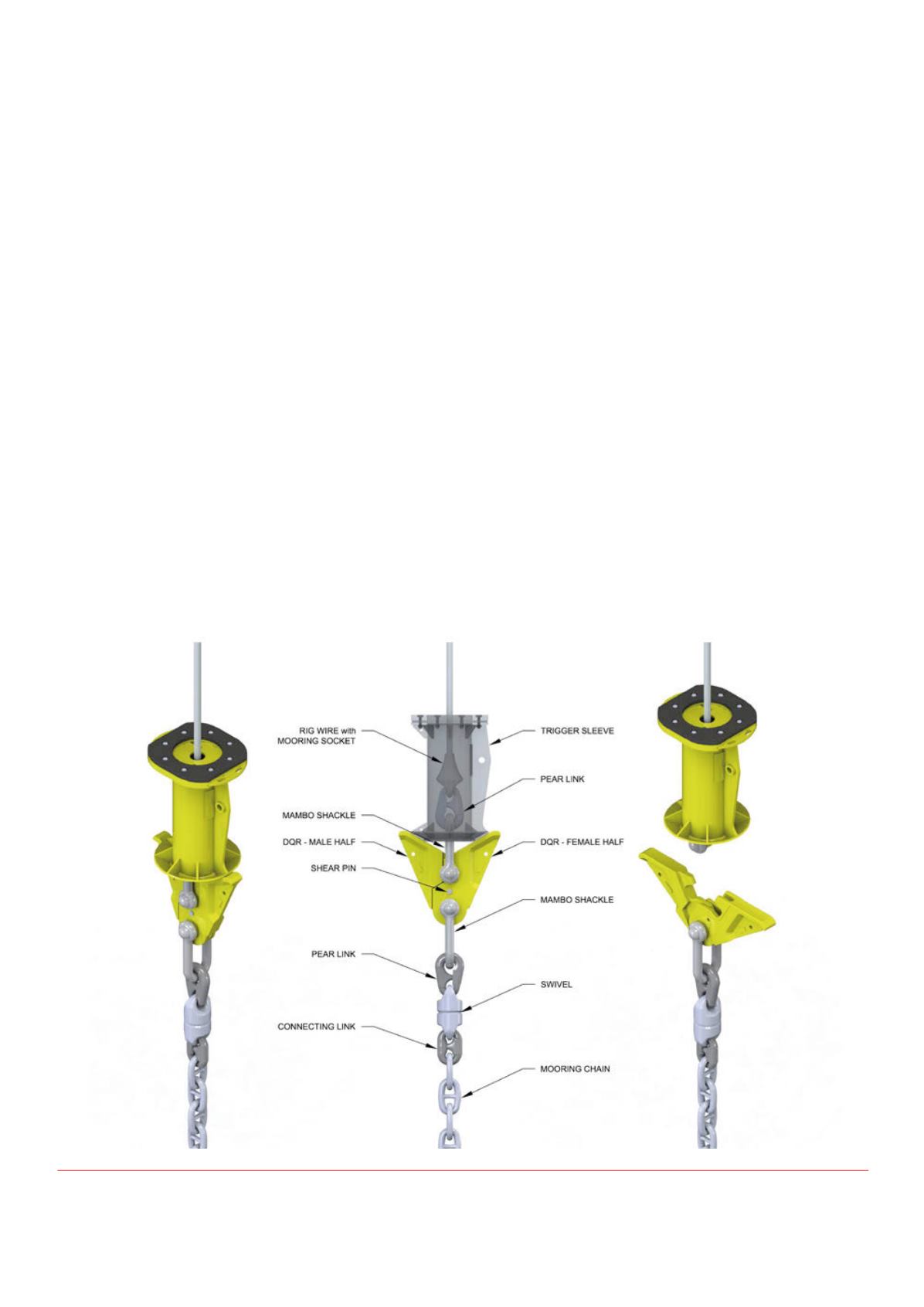
46 |
Oilfield Technology
January
2016
crew breaks it apart, separating the preset mooring line from the
rig.
Howitworks
The new system provides a more reliable and expedient means of
releasing mooring lines without the need for secondary support
vessels. The design goal was to incorporate reliable mechanical
functionality into mooring release systems. Operators have
expressed concerns with the reliability of having an acoustic
function as the sole means of release. These concerns are
addressed by the new system.
The DQR system, invented by Jason Pasternak, works with any
existing mooring equipment including wire rope, synthetics, and
chain. It is compatible with all rig-types, especially those with active
winching. For vessels without active winching, an AHV must still be
used for disconnect assistance, but it will still result in reduced time.
In general, incorporating the DQR into the mooring system
requires very similar considerations to any other preset mooring
system. To operate by active winching, the rig hauls in the mooring
wire rope or chain through the fairlead. As the trigger sleeve
contacts the fairlead cheek plates, the trigger sleeve wedges itself
into the release mechanism and breaks the shear pin, which opens
the arms and releases the mooring line (Figure 1).
The design process began with computer models and scaled
3D-printed plastic models, evolving into something that worked
consistently. The company then moved onto building and
testing a quarter scale steel model. After learning lessons from
that testing, making modifications to the trigger sleeve, and
testing some more, the company was finally ready for a full-scale
version, which in-turn had to be tested as well.
Testing
After a long series of scale model testing and full-scale testing, a
DQR function test took place on 1 September, 2015. It was tested
on a semi-submersible (MODU) docked at a shipyard in Brownsville,
Texas. The shear pin break and subsequent mooring line release
were calculated to occur within a range of 86 to 131 kips. For the
test a maximum allowable amount of 125 kips was set.
The system released at 105 kips, within the predicted range. It
functioned smoothly resulting in a controlled release.
The successful end of the testing phase means demand for
the DQR is just on the horizon, leading to an overall reduction
in mooring risks, operational costs, and greater flexibility in
emergency situations worldwide.
Savingtimeandmoney inemergencies
One of the biggest problems DP moored rigs will face is the
potential of crossing paths with a violent storm or cyclone. In
these emergency situations companies often have to make do
with a ‘best guess’ decision on whether to move out of harm’s
way or sit tight and weather out the storm. This means that
sometimes DP rigs make the wrong decision and either do not
leave when they should have or do leave unnecessarily, both of
which can be costly.
Predicting the intensity and path of a cyclone or major
tropical storm is not an exact science. According to a series of MIT
Figure 1.
Typical DQRandmooring line component arrangement.


